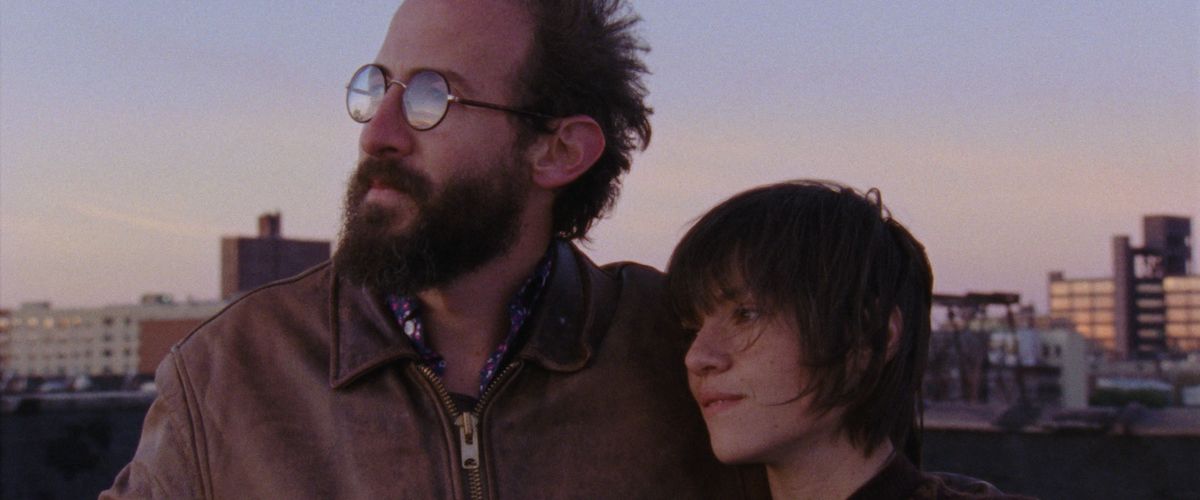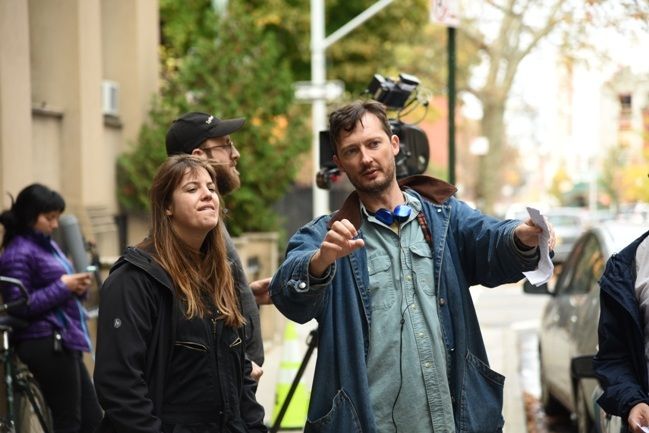
Person to Person: A Conversation with Writer/Director Dustin Guy Defa
From the L.A. Screenwriter collection.
The ensemble movie has become a mainstay at the theater around holidays, and such films often share their titles with the holiday they premiere on—Valentine’s Day, New Year’s Eve ...
Then there was the movie that started it all: Love Actually. Each of these films features a wide variety of loosely connected stories all focused around a central theme.
Person to Person, from Magnolia Pictures, falls into this ensemble category, but it subverts everything you’ve come to expect from these sorts of films. Written, directed, and edited by Dustin Guy Defa, Person to Person's storylines don’t always relate, not every character connects to every other character, and yet somehow the movie feels like a complete statement about human connection.
L.A. Screenwriter’s Angela Bourassa spoke with Dustin Guy Defa about how he approached the structure of this film, writing genuine dialogue, and the benefits and drawbacks of complete creative control.
Angela Bourassa: This film seems to defy conventional structure, even for an ensemble film. I kept expecting all of the storylines to link together in the end, but most of them didn’t. Can you tell me a bit about how you structured this? Why did you choose to defy convention?
Dustin Guy Defa: I got excited about the prospect of making an ensemble movie where all the storylines don’t intersect, because I haven’t seen that type of movie before. I wondered if I could pull it off, and also if I could make the audience not anticipate that kind of intersection, at least until after the movie was over. Then I wanted to push myself even further and put a lot of people in the movie who normally wouldn’t be in a film together. Different tones, too. Could I make the whole thing work as a cohesive piece even with these challenges? That’s what I set off to do. From there I developed the characters so that thematically they would at least interweave. Each of them has a different level of connection to other people—either a loss of connection, a threat of losing a connection, or a desperation to have a connection with another person—that runs through all of them, and that’s how I decided to structure and develop the film so that it could stay one whole piece.
Angela Bourassa: You first shot this as a short in 2009. Did you always want to expand this into a feature?
Dustin Guy Defa: The intention was never that this was an extension of the short. I made the short mostly because I wanted to put my good friend Bene Coopersmith in a movie. And definitely when that succeeded I had the desire to work with Bene again, and that’s how I started to develop this film, but the feature was originally called something else and I’ve always thought of it as a completely different piece. It’s only now because the title is the same—and of course that Bene is in it, and there is a similar tone to the short—that it appears that the feature is an extension. It is, yes, but not as much as it appears.
Angela Bourassa: How did this story begin in your mind? Did you start with a few characters or with a unifying theme that you wanted to address?
Dustin Guy Defa: It was always about the desire to connect with someone, or to reconnect with someone, or to keep a connection with someone intact. Friendship was something I wanted to explore, too. I started with Bene, but once I started to work on the other characters, I developed them all at the same time. The outline was extensive, and each story I worked on at the same time, linearly, and I did that to keep the film cohesive.

Angela Bourassa: Are you usually a big outliner? How many drafts did you go through?
Dustin Guy Defa: This one needed a tight outline, and I worked on that for a while. Then I wrote the first draft. The first draft took the longest, and then after that I think there were three more drafts. But the film was really there with that first draft. I did do a lot of changes, but I’d say the film is still about 60% of that first draft.
Angela Bourassa: There’s something truly unique about the dialogue that I can’t quite put my finger on. The characters seem to break the old screenwriting rules quite a bit and say exactly what they’re feeling, but they do it in a way that feels genuine. How did you approach the dialogue?
Dustin Guy Defa: I’ve worked very hard to craft the way I want to write dialogue. I love dialogue so much, which may lead me to make things a little more cinematic-driven than realism-driven, if that makes sense. I’m probably heavily influenced by Woody Allen and Todd Solondz with my dialogue, but I try not to think about that too much. I try to find my own thing, and I feel like I’m getting there. I’m trying to create my own kinds of characters who talk differently than I’ve seen in other films.
Angela Bourassa: Wendy is by far my favorite character. Can you tell me a bit about how you developed her story and her voice?
Dustin Guy Defa: That character is very close to who I was as a teenager, except for I didn’t talk as much. Which might seem contradictory because Wendy talks so much. But still, the way she sees the world, in a big way that’s to me a special kind of paradoxical teenager way—thinking that you understand the world at large but still struggling with your tiny problems which seem as big as the world, too—I love that stuff.
Angela Bourassa: You wrote, directed, and edited this film. What was it like having so much control over your own film? How did you look for outside feedback (or did you)?
Dustin Guy Defa: I love each of those processes (most of the time). When I write and direct, the edit is always in my mind, which helps everything work better. The edit, though, was too lonely and when finally I had someone come in to help for a few days, it was a great big breath of fresh air that was needed. I think next time I’ll not be the main editor. I need that other person to bounce off ideas with.
*Feature Photo: Bene Coopersmith and Tavi Gevinson in Person to Person / Magnolia Pictures (2017)